In August 2019, I stood on the windswept cliffs of Duntulm, at the very tip of the Trotternish Peninsula on the Isle of Skye. The sea crashed below, the wind howled through the ruins, and the air felt thick with stories. Duntulm isn’t just a scenic stop—it’s a place where history clings to every stone, and legend lingers in the salt air.
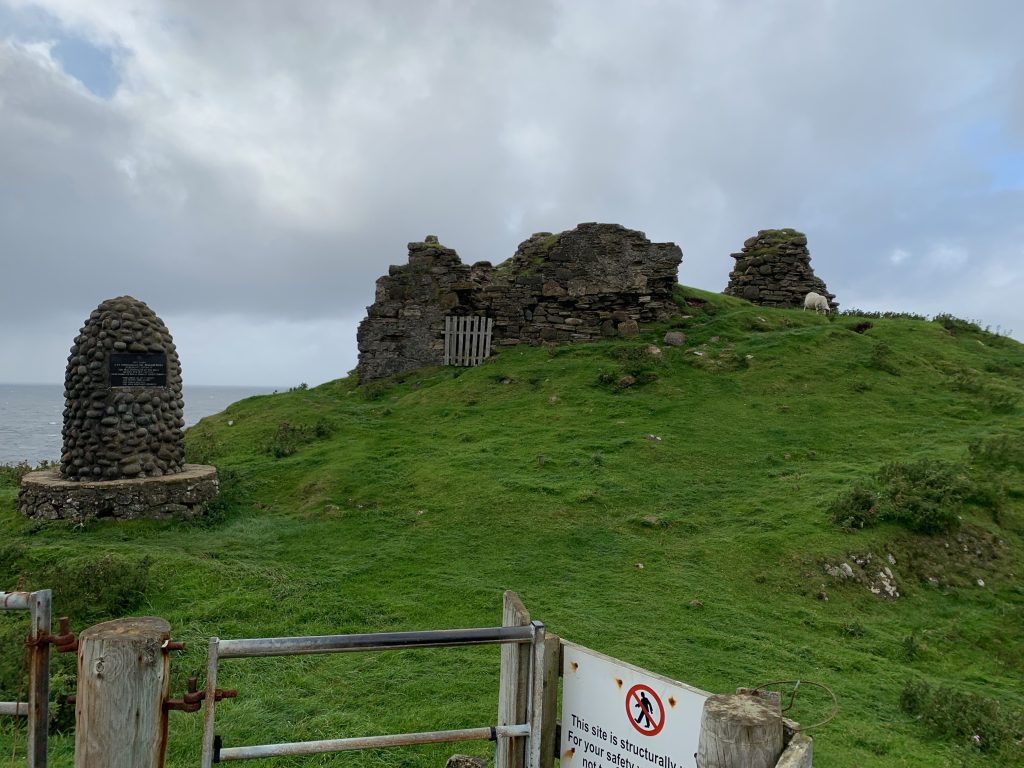
🏰 Duntulm Castle: A Fortress of Feuds and Folklore
The centerpiece of Duntulm is its ruined castle, perched dramatically on a basalt promontory above the sea. Though now crumbling and unsafe to enter, Duntulm Castle was once a formidable stronghold. Built in the 14th and 15th centuries, it became the seat of Clan MacDonald of Sleat in the 17th century.
Before the castle, the site may have hosted a prehistoric fort known as Dun Dhaibhidh (“David’s Fort”), though no archaeological evidence has confirmed this. The castle itself was likely constructed during the violent feuds between Clan MacLeod and Clan MacDonald, who battled for control of northern Skye throughout the medieval period.
In 1618, Sir Donald MacDonald of Sleat—known as Donald Gorm Og—was ordered by the Privy Council to repair and fortify Duntulm. He added a second tower and improved the defenses, including a deep ditch cut into the rock on the landward side. By the mid-1600s, the castle reached its peak, with a rectangular house built within the curtain walls.
But by 1732, the MacDonalds abandoned Duntulm for Monkstadt House, five miles south, stripping the castle of its stone for the new residence. Since then, the ruins have slowly succumbed to the elements, with major collapses as recently as the 1990s.
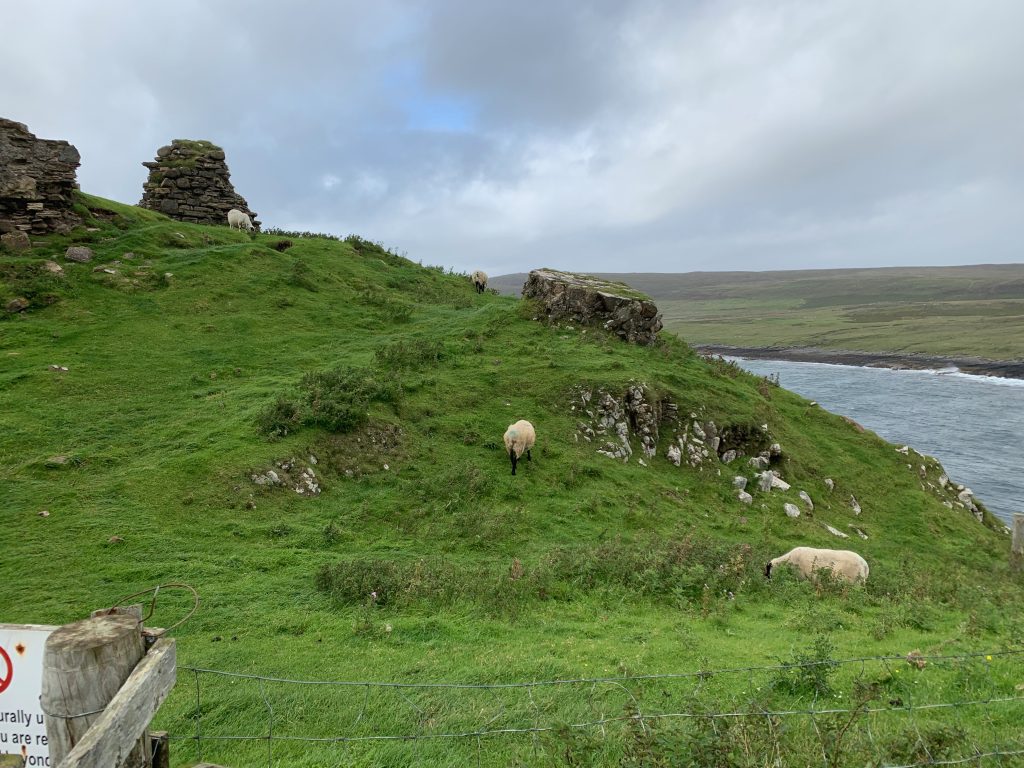
👻 Legends and Ghosts
Duntulm Castle is steeped in eerie tales. One of the most chilling involves Hugh MacDonald, cousin to Donald Gorm, who plotted to murder him and seize leadership. When the plot was discovered, Hugh was imprisoned in Duntulm’s dungeon with only salty beef and no water. He went mad and died of thirst—his ghost is said to still scream through the ruins.
Another legend tells of a nursemaid who dropped the infant son of the clan chief from a window onto the rocks below. As punishment, she was set adrift in the Atlantic in a small boat. The tragedy led to the castle’s abandonment by the grieving family.
🛡️ Clan MacDonald of Sleat: Lords of the North
Duntulm was the power base of Clan MacDonald of Sleat, a branch of the mighty Clan Donald. The MacDonalds were Lords of the Isles, descended from Somerled, a Norse-Gaelic warlord. Their control of Skye was contested by the MacLeods, leading to centuries of skirmishes, shifting alliances, and bloodshed.
King James V visited Duntulm in 1540 and was reportedly impressed by its strength and the hospitality of the MacDonalds. But not all visitors were so lucky—Duntulm’s history is as brutal as it is grand.
🌊 The Setting: Skye’s Northern Wilds
The hamlet of Duntulm is remote and hauntingly beautiful. The cliffs offer sweeping views of the Outer Hebrides, and the nearby Kilmaluag Bay is a haven for seabirds and seals. The A855 coastal road winds past the castle ruins, with a small lay-by for visitors to park and walk the short path to the site.
Though the castle is unsafe to enter, the view from the fence line is breathtaking. The sea, the stone, and the silence combine to create an atmosphere that’s both eerie and unforgettable.
Duntulm is more than a ruin—it’s a monument to Highland resilience, clan rivalry, and the enduring power of place. If you find yourself on Skye’s northern edge, take the time to stand among the stones and listen. The ghosts of Duntulm still have stories to tell.
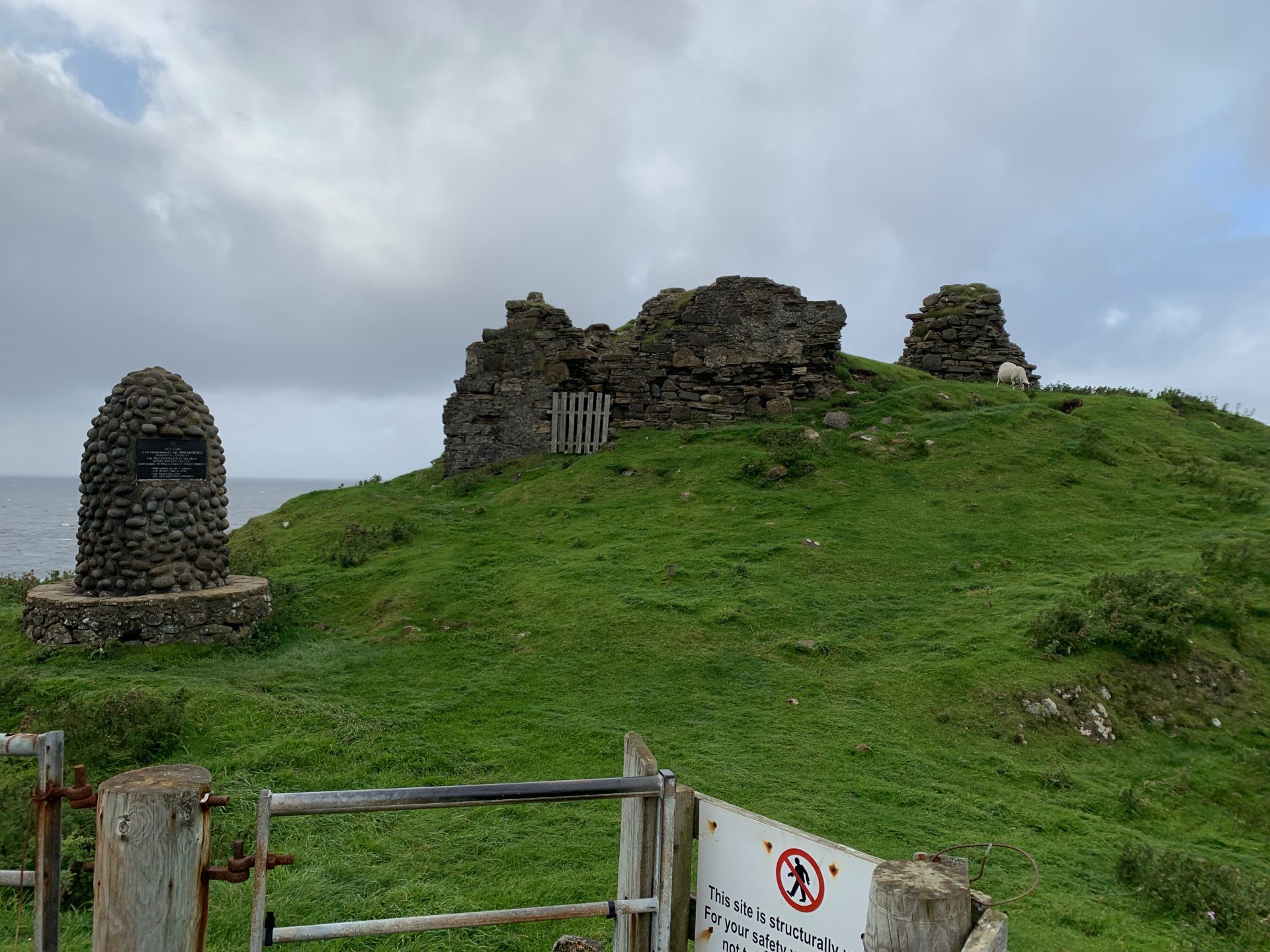
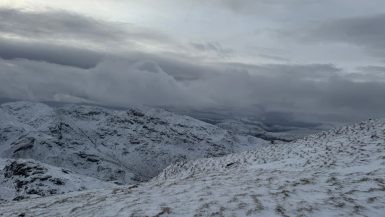
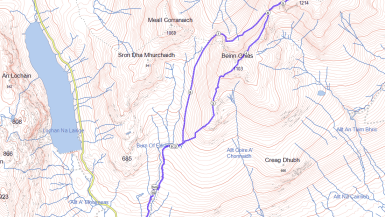
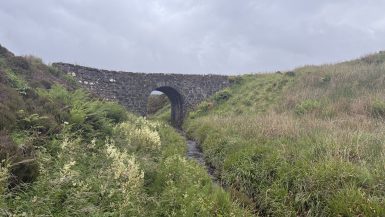
Leave a reply
You must be logged in to post a comment.